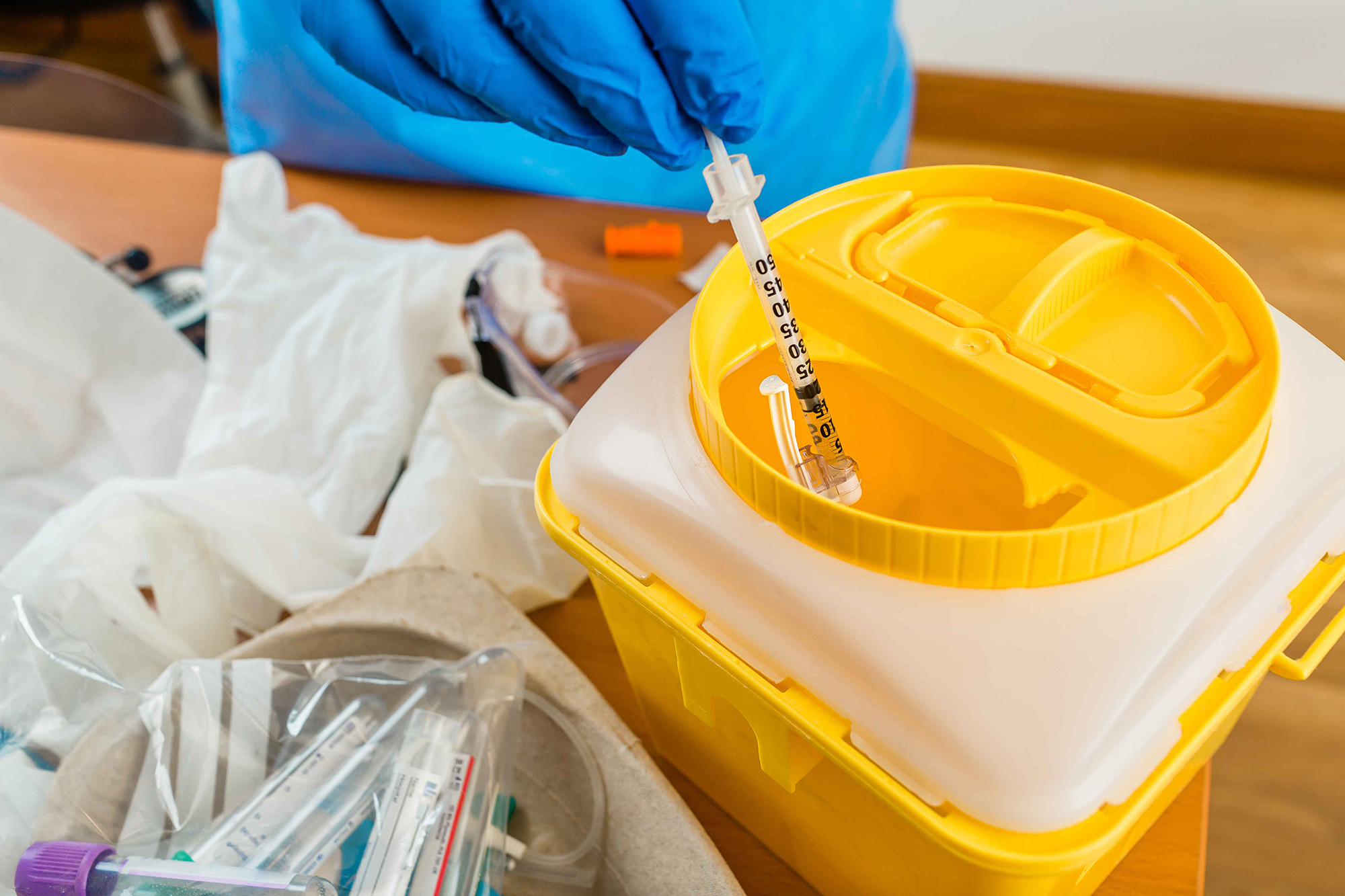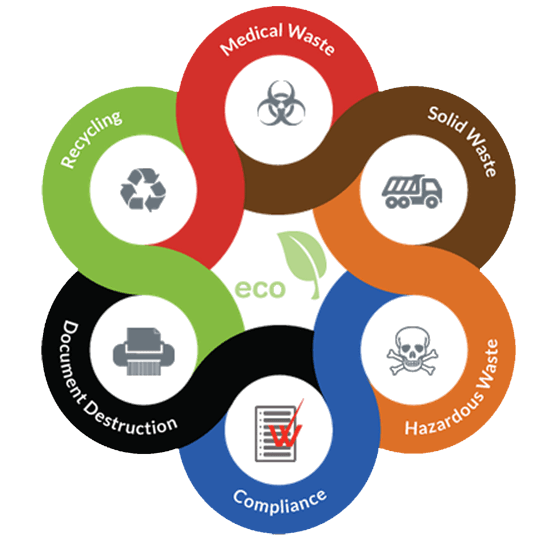Compliance and Rules for Medical Garbage Disposal
Conformity and laws for clinical garbage disposal play an essential function in making sure the safety and security and well-being of both healthcare professionals and the basic public. Appropriate management of medical waste is necessary to avoid the spread of infections, safeguard the atmosphere, and maintain public health and wellness. This calls for adherence to certain standards and protocols set forth by regulative companies and bodies. These laws include various aspects, including the category and segregation of medical waste, proper storage and dealing with treatments, as well as transportation and disposal approaches. By following these regulations, medical care centers can lessen the threat of contamination and prospective damage to people and the environment. This post will discover the value of compliance and give an overview of the crucial policies governing clinical garbage disposal.
Significance of Conformity
The significance of conformity with laws for medical garbage disposal can not be overemphasized. Appropriate disposal of medical waste is important for ensuring the security and well-being of medical care employees, individuals, and the basic public. Clinical waste, that includes things such as utilized needles, contaminated handwear covers, and biomedical waste, can posture severe health dangers if not dealt with and disposed of properly.
Compliance with guidelines ensures that medical waste is handled in a means that lessens the possibility for direct exposure to contagious conditions and dangerous materials - medical waste disposal. It helps protect against the spread of infections, such as HIV, hepatitis B and C, and other bloodborne pathogens. Compliance likewise plays a vital function in shielding the atmosphere by stopping contamination of water resources, dirt, and air
Failing to follow laws can cause severe repercussions for medical care facilities, including penalties, lawful activity, and damage to their credibility. In addition, non-compliance may endanger the wellness and safety and security of health care employees, people, and the neighborhood.
Conformity with laws for clinical garbage disposal requires adherence to certain guidelines and protocols. These might include appropriate partition, product packaging, labeling, and storage of medical waste. It additionally involves utilizing authorized disposal techniques, such as incineration, landfilling, or autoclaving, relying on the kind of waste.
Regulatory Agencies and Bodies
Governing agencies and bodies play a critical function in looking after conformity with policies for clinical waste disposal. These companies are accountable for establishing protocols, standards, and standards to make certain the correct and safe handling of clinical waste. They enforce and check compliance to shield public wellness and the atmosphere.
Among the most famous regulative companies in the USA is the Epa (EPA) The EPA is accountable for regulating the storage space, transportation, therapy, and disposal of medical waste. They establish guidelines for waste generators, carriers, and therapy facilities to adhere to, making sure that all essential precautions are taken to stop the spread of conditions and contamination.
Another essential regulatory body is the Occupational Security and Health Management (OSHA) OSHA sets policies and requirements to safeguard workers from work risks, consisting of those pertaining to medical waste. WasteX Medical Waste Disposal. They offer standards for the safe handling and disposal of medical waste to protect workers in medical care facilities
In enhancement to these federal agencies, specific states likewise have their very own regulatory bodies that oversee clinical waste disposal. These firms might have their very own details policies and needs that must be adhered to.

Classification and Segregation of Clinical Waste
To make certain proper monitoring of medical waste, it is important to categorize and segregate it according to developed standards and methods. medical waste removal. Classification and segregation play an important duty in reducing the danger of infection, safeguarding the environment, and making sure the safety and security of health care employees and the public
Medical waste is identified into various categories based upon its prospective hazard degree. These categories consist of contagious waste, pathological waste, sharps waste, pharmaceutical waste, chemical waste, and contaminated waste. Each classification needs certain handling, disposal, storage space, and transportation approaches to minimize the danger of direct exposure and contamination.
Partition of medical waste entails separating various kinds of waste at the resource. This process ensures that waste with various threat levels is not blended, minimizing the capacity for cross-contamination and making disposal treatments much more reliable. Appropriate segregation is attained via the use of color-coded containers and labels, which help health care Visit This Link employees and waste monitoring workers take care of each kind and determine of waste correctly.
Along with category and partition, medical care centers have to likewise stick to local, state, and federal policies concerning clinical waste management. These regulations detail specific demands for storage, transportation, treatment, and last disposal of clinical waste, ensuring compliance and preserving public health and safety.
Correct Storage Space and Taking Care Of Treatments
Appropriate storage and dealing with procedures play a vital function in making certain the certified and secure administration of clinical waste. Clinical waste, which includes products such as utilized syringes, infected handwear covers, and expired drugs, can present serious wellness and environmental dangers if not dealt with properly. It is essential for health care centers and various other generators of medical waste to apply rigorous storage space and dealing with methods.
To start with, clinical waste must be saved in long lasting, watertight containers that are specifically made for this function. These containers should be classified with the global biohazard icon and words "clinical waste" to plainly suggest the components. Furthermore, the containers ought to be kept safely near avoid any possible leakage or spillage.
Moreover, it is essential to set apart different sorts of clinical waste to stop cross-contamination. Sharps, such as needles and scalpels, must be stored in puncture-resistant containers to reduce the danger of injuries - WasteX Medical Waste Disposal. Chemical waste, such as anti-bacterials and solvents, ought to be kept separately from various other types of clinical waste to avoid chemical responses or dangerous exposures

Transport and Disposal Techniques
Healthcare facilities need to make certain the safe transportation and proper disposal of their medical waste to abide with regulations and protect public wellness. Transportation and disposal approaches play a crucial role in preventing the spread of transmittable illness and minimizing the environmental influence of clinical waste.
To transfer clinical waste, health care facilities ought to utilize puncture-resistant and leak-proof containers that are identified with the biohazard sign. These containers must be safely sealed to avoid any leak during transportation. Furthermore, medical care facilities need to develop protocols for the transport process, including the usage of committed automobiles and qualified workers.
As soon as the medical waste gets to the disposal facility, it goes through numerous techniques of treatment - WasteX Medical Waste Disposal. One common method is incineration, which involves shedding the waste at high temperatures to destroy microorganisms and minimize the quantity of waste.
It is necessary for healthcare centers to collaborate with qualified and permitted waste monitoring firms to ensure appropriate transportation and disposal of clinical waste. These business have the experience and resources to take care of clinical waste securely and in conformity with policies.
Conclusion
In conclusion, compliance with laws for clinical waste disposal is of utmost relevance to make certain public health and safety. In general, adherence to conformity and regulations is required to properly handle medical waste.
Medical waste, which includes products such as utilized needles, infected gloves, and biomedical waste, can position major wellness dangers if not handled and disposed of effectively.
These groups include contagious waste, pathological waste, sharps waste, pharmaceutical waste, chemical waste, and radioactive waste.Partition of clinical waste involves dividing various kinds of waste at the source. Appropriate partition is attained with the usage of color-coded containers and tags, which help health care employees and waste monitoring personnel recognize and manage each kind of waste correctly.
Chemical waste, such as disinfectants and solvents, must be kept independently from other types of clinical waste to prevent unsafe exposures or chemical responses.